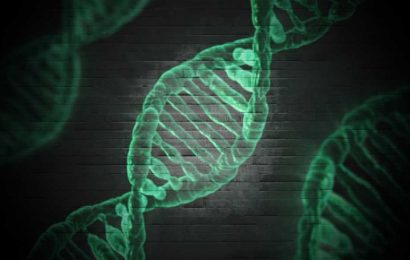Why do metastases often only appear after the original tumor has been surgically removed? Scientists from the German Cancer Research Center (Deutsches Krebsforschungszentrum, DKFZ) and the Mannheim Medical Faculty of Heidelberg University have now published an explanation for this phenomenon. They were able to identify a messenger substance of the cancer cells that locally promotes the growth of the primary tumor. In the blood, the messenger is split into two fragments, one of which suppresses metastasis. Tumor-bearing mice treated with the metastasis-inhibiting fragment survived cancer longer than untreated animals.
Cancer doctors are familiar with the observation: in many of their patients, the usually life-threatening metastases only appear after the original tumor has been surgically removed. This phenomenon is particularly common in breast cancer and black skin cancer. Physicians have derived the concept of “concomitant tumor resistance” from this observation. It states that the original cancer focus, also called the primary tumor, can suppress the growth of the daughter tumors known as metastases.
The causes of this phenomenon are as yet poorly understood. Experts assume that the immune system plays a role, together with so-called angiogenic factors, which influence the connection of the metastases to the blood vessel system. From a size of about one millimeter, the daughter tumors depend on being supplied by blood vessels. Researchers were able to show several years ago that, depending on the tissue environment, tumors either release messenger substances that promote the formation of new blood vessels or factors that suppress the sprouting of new veins.
Scientists led by Hellmut Augustin and Moritz Felcht of the German Cancer Research Center and the Mannheim Medical School of Heidelberg University have now taken a closer look at the messenger angiopoietin-like 4 (ANGPLT4). “We became aware of ANGPLT4 because there are many contradictory publications on this factor,” Augustin said. “While ANGPLT4 was initially described as promoting the formation of new blood vessels and thus also promoting cancer, other studies were able to prove the exact opposite and show that ANGPLT4 inhibits the development of metastases.”
In comprehensive series of experiments on human and mouse tumors, the Heidelberg-Mannheim team elucidated a surprising mechanism. Among 38 different messenger substances that act on vascularization and possibly on concomitant tumor resistance, ANGPLT4 was found to be one of the molecules most strongly correlated with progressive tumor growth
ANGPLT4 is produced by cells of the primary tumor and locally promotes its growth. However, if the messenger substance is released into the bloodstream, it is cleaved. The two cleavage products are called nANGPLT4 and cANGPLT4. For reasons not yet fully understood, the n fragment (nANGPLT4) is found almost exclusively in serum. nANGPLT4, however, binds to a different receptor than either the intact molecule or the c fragment.
Source: Read Full Article


